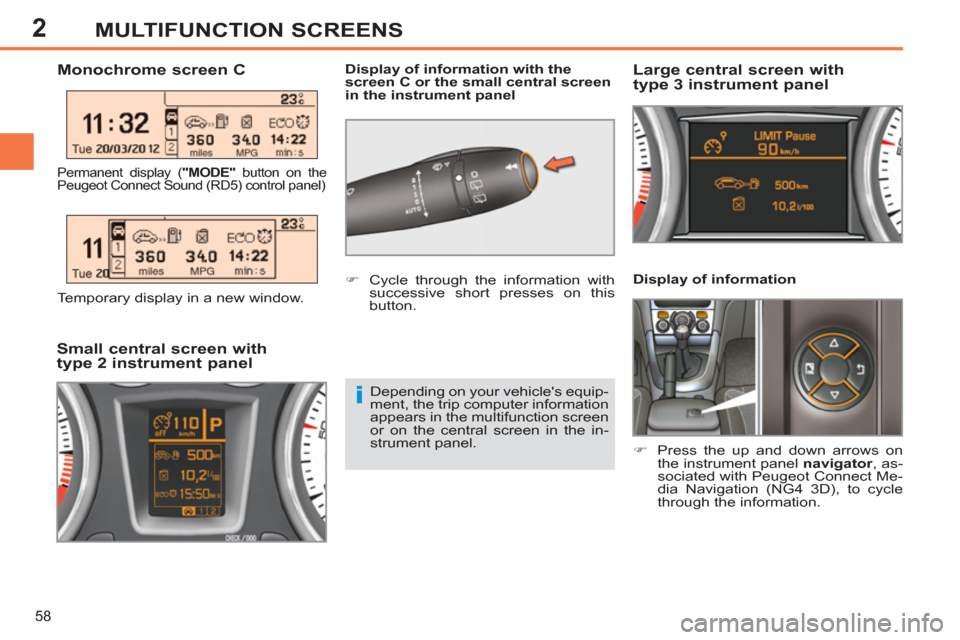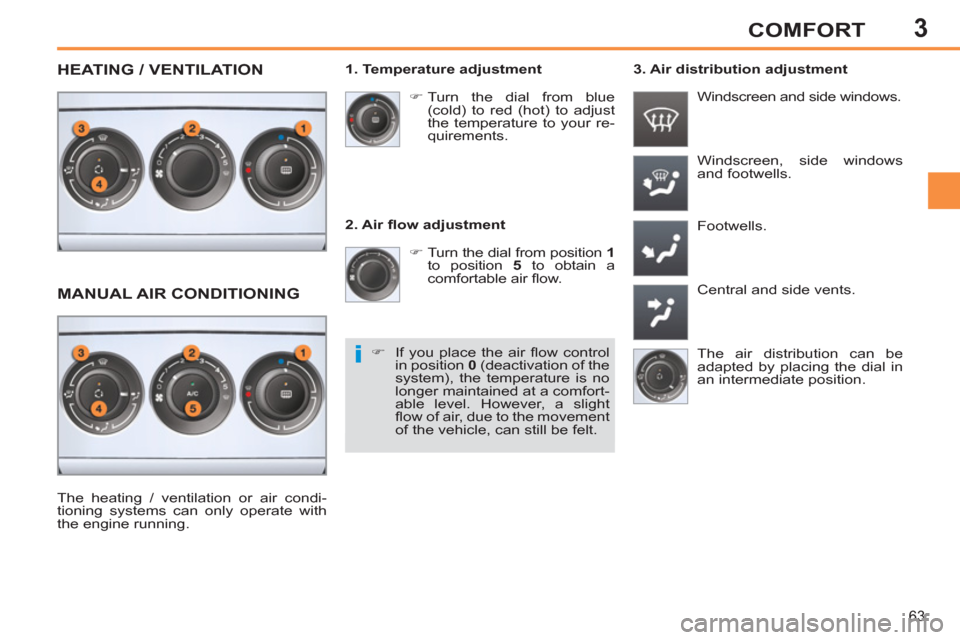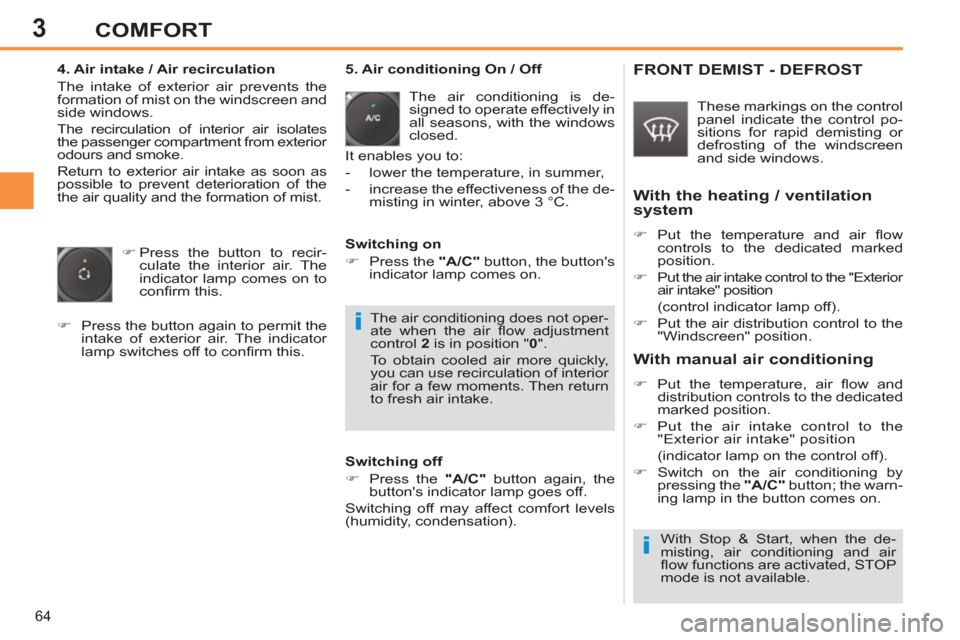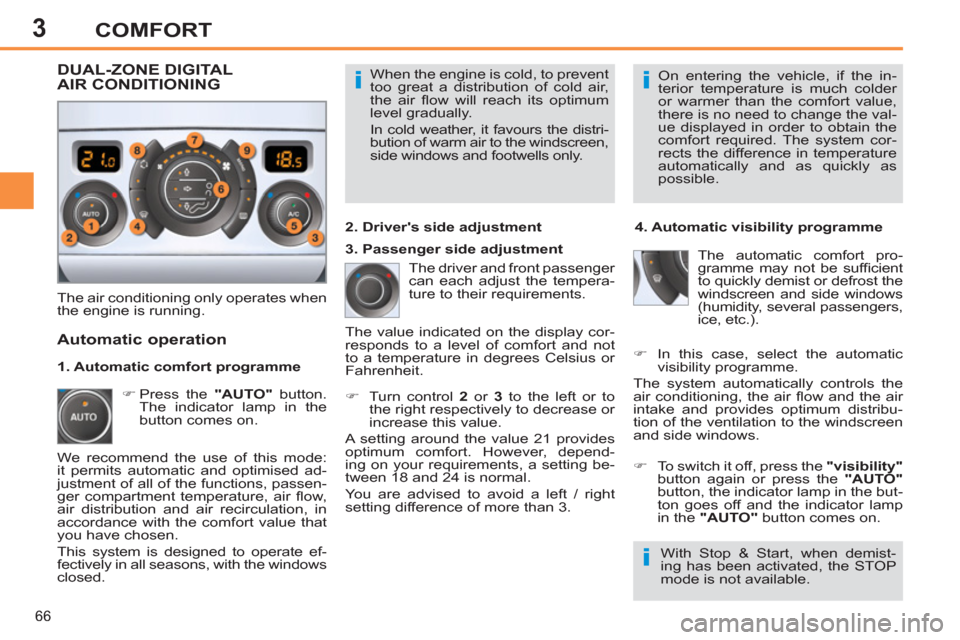2013 Peugeot 308 SW BL window
[x] Cancel search: windowPage 4 of 382

2
CONTENTS
Instrument panels 25
Warning and indicator lamps 29
Indicators 39
Instrument panel buttons 43Ventilation 61
Heating 63
Manual air conditioning 63
Rear screen demist - defrost 65
Dual-zone digital air conditioning 66
Front seats 68
Rear seats 72
Seat modularity 78
Mirrors 80
Steering wheel adjustment 82
COMFORT 61 �Π82
Remote control key 83
Alarm 87
Electric windows 89
Doors 91
Boot 94
Panoramic sunroof 95
Fuel tank 96
Misfuel prevention (Diesel) 97
ACCESS 83 �Π98
Lighting controls 99
LED lamps 101
Daytime running lamps 101
Headlamp adjustment 103
Directional lighting 104
Wiper controls 105
Automatic rain sensitive wipers 107
Courtesy lamps 108
Interior mood lighting 109
Boot lamp 109
VISIBILITY 99 �Π109
Child seats 125
ISOFIX child seats 131
Child lock 136
CHILD
SAFETY 125 �Π136 FAMILIARISATION 4 �Π22
INSTRUMENTS and
CONTROLS 25 �Π44
Screens without audio equipment 45
Screens with audio equipment 47
Retractable colour screen
(Peugeot Connect Navigation (RT6)) 52Retractable colour screen (Peugeot Connect
Media Navigation (NG4 3D)) 54
Trip computer 57
MULTIFUNCTION
SCREENS 45 �Π60
Interior fi ttings 110
Front armrest 113
Boot fi ttings 116
FITTINGS 110 �Π124
7
5
4
3
26
ECO-DRIVING 23 �Π24
Page 11 of 382

9
FAMILIARISATION
INSTRUMENTS AND CONTROLS
1.
Cruise control / speed limiter
switches.
2.
Steering wheel adjustment control.
3.
Lighting and direction indicator
control stalk.
4.
Instrument panel.
5.
Driver's airbag.
Horn.
6.
Gear lever.
7.
Parking brake lever.
8.
Panoramic sunroof blind control.
9.
Heated seat control.
10.
Bonnet release.
11 .
Door mirror controls.
Electric window controls.
12.
Fusebox.
13.
Manual headlamp height
adjustment.
Stop & Start button.
14.
Front side window demisting vent.
15.
Speaker (tweeter).
16.
Windscreen demisting vent.
Page 25 of 382

23
ECO-DRIVING
Eco-driving is a range of everyday practices that allow the motorist to optimise their fuel consumption and CO2 emissions.
Optimise the use of your
gearbox
With a manual gearbox, move off gen-
tly, change up without waiting and
drive by changing up quite soon. If
your vehicle has the system, the gear
shift indicator invites you to change up;
it is displayed in the instrument panel,
follow its instructions.
With an automatic or electronic gear-
box, stay in Drive "D"
or Auto "A"
, ac-
cording to the type of gearbox, without
pressing the accelerator pedal heavily
or suddenly.
Drive smoothly
Maintain a safe distance between ve-
hicles, use engine braking rather than
the brake pedal, and press the accel-
erator progressively. These practices
contribute towards a reduction in fuel
consumption and CO
2 emissions and
also helps reduce the background traf-
fi c noise.
If your vehicle has cruise control, make
use of the system at speeds above
25 mph (40 km/h) when the traffi c is
fl owing well.
Control the use of your
electrical equipment
Before moving off, if the passenger
compartment is too warm, ventilate it by
opening the windows and air vents be-
fore using the air conditioning.
Above 30 mph (50 km/h), close the win-
dows and leave the air vents open.
Remember to make use of equipment
that can help keep the temperature in
the passenger compartment down (sun-
roof and window blinds...).
Switch off the air conditioning, unless
it has automatic digital regulation, as
soon as the desired temperature is at-
tained.
Switch off the demisting and defrosting
controls, if not automatic.
Switch off the heated seat as soon as
possible.
Switch off the headlamps and front fo-
glamps when the level of light does not
require their use.
Avoid running the engine before moving
off, particularly in winter; your vehicle will
warm up much faster while driving.
As a passenger, if you avoid connecting
your multimedia devices (fi lm, music,
video game...), you will contribute to-
wards limiting the consumption of elec-
trical energy, and so of fuel.
Disconnect your portable devices be-
fore leaving the vehicle.
Page 60 of 382

2
58
MULTIFUNCTION SCREENS
Display of information
�)
Press the up and down arrows on
the instrument panel navigator
, as-
sociated with Peugeot Connect Me-
dia Navigation (NG4 3D), to cycle
through the information.
Monochrome screen C
Display of information with the
screen C or the small central screen
in the instrument panel
Large central screen with
type 3 instrument panel
Small central screen with
type 2 instrument panel
Depending on your vehicle's equip-
ment, the trip computer information
appears in the multifunction screen
or on the central screen in the in-
strument panel.
�)
Cycle through the information with
successive short presses on this
button.
Permanent display ( "MODE"
button on the
Peugeot Connect Sound (RD5) control panel)
Temporary display in a new window.
Page 63 of 382

3
61
COMFORT
VENTILATION
Air treatment
The incoming air follows various routes
depending on the controls selected by
the driver:
- direct arrival in the passenger compart-
ment (air intake),
- passage through a heating circuit
(heating),
- passage through a cooling circuit
(air conditioning).
The temperature control enables you to
obtain the level of comfort required by
mixing the air of the various circuits. The air distribution control enables you to
diffuse the air in the passenger compart-
ment combining several air vents.
The air fl ow control enables you to increase
or reduce the speed of the ventilation blower.
Air intake
The air circulating in the passenger com-
partment is fi ltered and originates either
from the outside via the grille located at
the base of the windscreen or from the
inside in air recirculation mode.
Control panel
The controls of this system are grouped
together on control panel A
on the centre
console. Depending on the model, the
functions offered are:
- level of comfort required,
- air fl ow,
- air distribution,
- demisting and defrosting,
- manual or digital air conditioning
controls.
Air diffusion
1.
Windscreen demisting vents.
2.
Front side window demisting/defrosting
vents.
3.
Side adjustable air vents.
4.
Central adjustable air vents.
5.
Air outlets to the front footwells.
6.
Adjustable air vents for the rear passengers.
7.
Air outlets to the rear footwells.
Page 65 of 382

3
63
COMFORT
2. Air fl ow adjustment
�)
Turn the dial from position 1
to position 5
to obtain a
comfortable air fl ow.
Windscreen, side windows
and footwells.
Footwells.
Central and side vents.
�)
Turn the dial from blue
(cold) to red (hot) to adjust
the temperature to your re-
quirements.
Windscreen and side windows.
1. Temperature adjustment
The air distribution can be
adapted by placing the dial in
an intermediate position.
The heating / ventilation or air condi-
tioning systems can only operate with
the engine running.
�)
If you place the air fl ow control
in position 0
(deactivation of the
system), the temperature is no
longer maintained at a comfort-
able level. However, a slight
fl ow of air, due to the movement
of the vehicle, can still be felt.
3. Air distribution adjustment
HEATING / VENTILATION
MANUAL AIR CONDITIONING
Page 66 of 382

3
64
COMFORT
4. Air intake / Air recirculation
The intake of exterior air prevents the
formation of mist on the windscreen and
side windows.
The recirculation of interior air isolates
the passenger compartment from exterior
odours and smoke.
Return to exterior air intake as soon as
possible to prevent deterioration of the
the air quality and the formation of mist.
�)
Press the button to recir-
culate the interior air. The
indicator lamp comes on to
confi rm this.
�)
Press the button again to permit the
intake of exterior air. The indicator
lamp switches off to confi rm this.
5. Air conditioning On / Off
The air conditioning is de-
signed to operate effectively in
all seasons, with the windows
closed.
It enables you to:
- lower the temperature, in summer,
- increase the effectiveness of the de-
misting in winter, above 3 °C.
Switching off
�)
Press the "A/C"
button again, the
button's indicator lamp goes off.
Switching off may affect comfort levels
(humidity, condensation).
Switching on
�)
Press the "A/C"
button, the button's
indicator lamp comes on.
FRONT DEMIST - DEFROST
These markings on the control
panel indicate the control po-
sitions for rapid demisting or
defrosting of the windscreen
and side windows.
With the heating / ventilation
system
�)
Put the temperature and air fl ow
controls to the dedicated marked
position.
�)
Put the air intake control to the "Exterior
air intake" position
(control indicator lamp off).
�)
Put the air distribution control to the
"Windscreen" position.
With manual air conditioning
�)
Put the temperature, air fl ow and
distribution controls to the dedicated
marked position.
�)
Put the air intake control to the
"Exterior air intake" position
(indicator lamp on the control off).
�)
Switch on the air conditioning by
pressing the "A/C"
button; the warn-
ing lamp in the button comes on.
The air conditioning does not oper-
ate when the air fl ow adjustment
control 2
is in position " 0
".
To obtain cooled air more quickly,
you can use recirculation of interior
air for a few moments. Then return
to fresh air intake.
With Stop & Start, when the de-
misting, air conditioning and air
fl ow functions are activated, STOP
mode is not available.
Page 68 of 382

3
66
COMFORT
When the engine is cold, to prevent
too great a distribution of cold air,
the air fl ow will reach its optimum
level gradually.
In cold weather, it favours the distri-
bution of warm air to the windscreen,
side windows and footwells only. On entering the vehicle, if the in-
terior temperature is much colder
or warmer than the comfort value,
there is no need to change the val-
ue displayed in order to obtain the
comfort required. The system cor-
rects the difference in temperature
automatically and as quickly as
possible.
The air conditioning only operates when
the engine is running. The driver and front passenger
can each adjust the tempera-
ture to their requirements.
�)
Turn control 2
or 3
to the left or to
the right respectively to decrease or
increase this value.
A setting around the value 21 provides
optimum comfort. However, depend-
ing on your requirements, a setting be-
tween 18 and 24 is normal.
You are advised to avoid a left / right
setting difference of more than 3.
4. Automatic visibility programme
The automatic comfort pro-
gramme may not be suffi cient
to quickly demist or defrost the
windscreen and side windows
(humidity, several passengers,
ice, etc.).
Automatic operation
�)
Press the "AUTO"
button.
The indicator lamp in the
button comes on.
2. Driver's side adjustment
DUAL-ZONE DIGITAL
AIR CONDITIONING
We recommend the use of this mode:
it permits automatic and optimised ad-
justment of all of the functions, passen-
ger compartment temperature, air fl ow,
air distribution and air recirculation, in
accordance with the comfort value that
you have chosen.
This system is designed to operate ef-
fectively in all seasons, with the windows
closed. The value indicated on the display cor-
responds to a level of comfort and not
to a temperature in degrees Celsius or
Fahrenheit.
�)
To switch it off, press the "visibility"
button again or press the "AUTO"
button, the indicator lamp in the but-
ton goes off and the indicator lamp
in the "AUTO"
button comes on.
1. Automatic comfort programme
3. Passenger side adjustment
�)
In this case, select the automatic
visibility programme.
The system automatically controls the
air conditioning, the air fl ow and the air
intake and provides optimum distribu-
tion of the ventilation to the windscreen
and side windows.
With Stop & Start, when demist-
ing has been activated, the STOP
mode is not available.